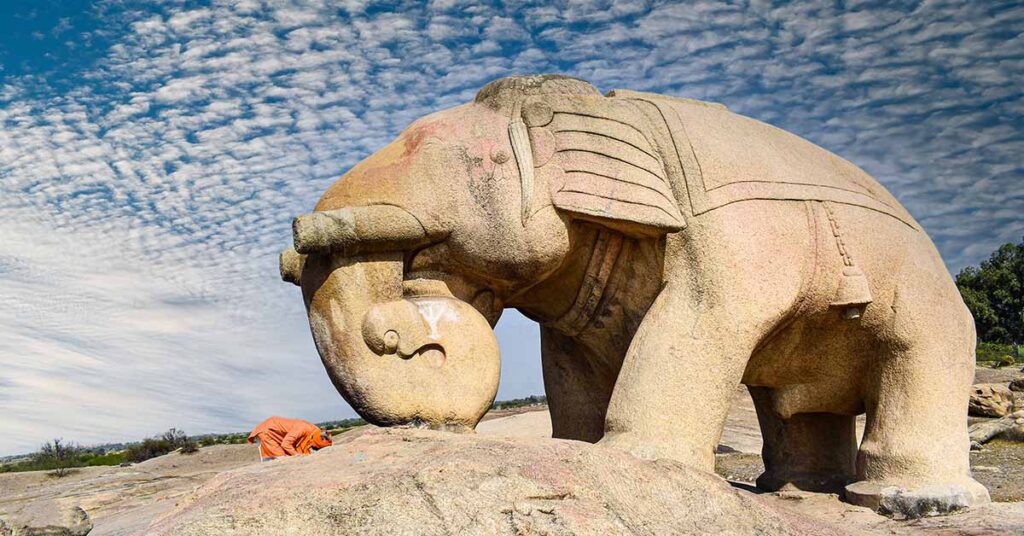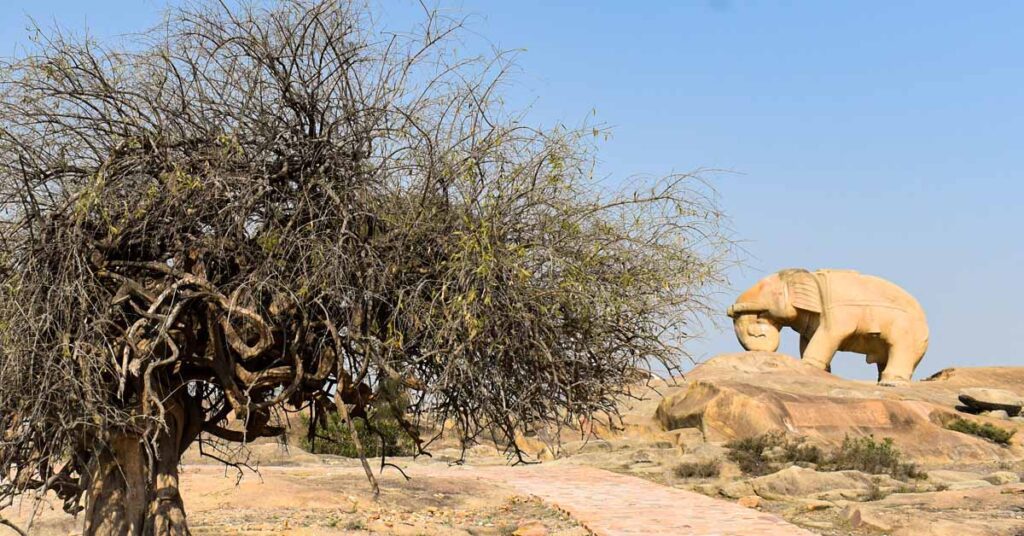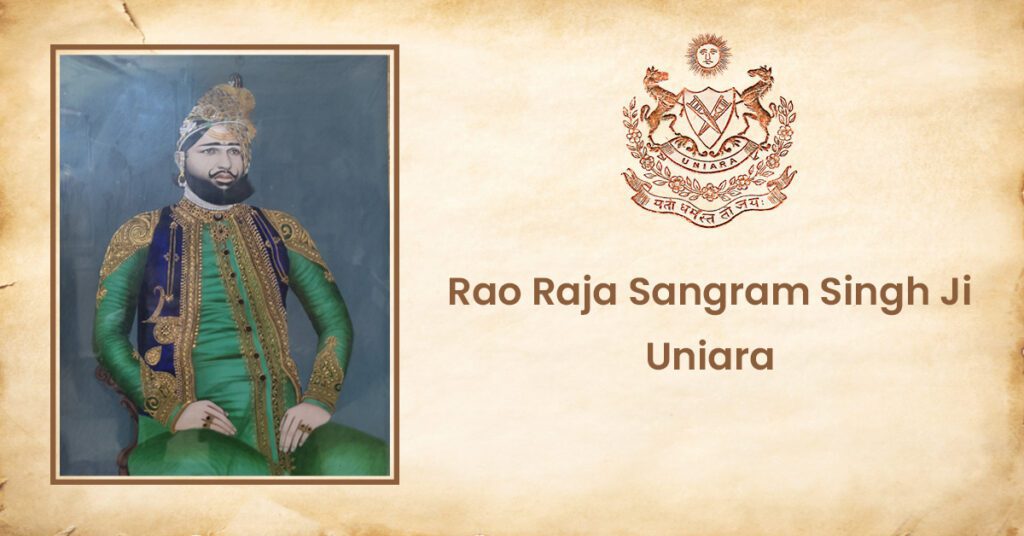A Mysterious Monument Hathi Bhata Stone Elephant on the Road to Uniara

A long time ago, when the land of Rajasthan was full of stories about brave kings and ancient times, something special was made near the town of Tonk. A large Hathi Bhata Stone Elephant is on the road to Uniara, close to a small village called Kakod. From far away, it looks so real that people often think it is a living elephant. But as you walk closer, you realize it’s made of stone.
Hathi Bhata Stone Elephant: A Link to the Mahabharata and the Pandavas
They took a giant rock and carved it into the shape of an elephant. Working through the night, they used their strength and skill to create the statue. After finishing the carving, they prayed and gave the statue a spiritual presence.

People believe this elephant is connected to the Pandavas from the Mahabharata. During their exile, the Pandavas are said to have travelled through this region. Draupadi, also known as Panchali, had a habit she never ate without first praying to Lord Ganesha. But there was no temple nearby, so the Pandavas decided to do something about it.
Here, Bhim, known for his unmatched strength, left behind a mark that still lives on. According to local legend, he struck the ground with his knee. The force was so strong that it created a deep hollow. Over time, this hole filled with water and became a pond. But locals say this area is no ordinary pond—it’s so deep, it reaches the underworld. It has never dried up even during the hottest summers or most extended droughts.
The Havan Kund and 64 Mysterious Plates near Hathi Bhata Stone Elephant
Close to this mysterious pond stands Hathi Bhata—the same stone elephant carved by the Pandavas. In front of it is a havan kund, a fire altar surrounded by 64 carefully arranged stone plates. No one knows for sure who placed them there or why. Were they used for ancient rituals? Did saints sit there and pray? No one really knows. Even today, the pond, the elephant, and the altar remain part of a mystery that hasn’t been solved.
The Mughal Encounter and the Bleeding Stone
During the Mughal period, some soldiers came across the elephant and were amazed by its size and design. They decided to take it away. But as they began to break its legs to move it, something strange happened—blood started to flow from the stone.
Everyone was terrified.
The workers stopped. The soldiers dropped their tools. Scared, they all ran away and never returned. Since then, no one has tried to touch the statue. The elephant still stands there, calm and quiet as if watching over the land, keeping its secrets.
Generations have told these stories. People don’t visit Hathi Bhata to see a stone elephant—they come to feel the old stories, the silence of the pond, and the mystery of the place. It’s more than just stone and history—it feels alive.
Hathi Bhata is about 22 kilometers from Tonk and stands as a strong symbol of Rajasthan’s past, full of faith, legends, and stories that continue to live on.
Want to explore more offbeat destinations in India? Click here to uncover hidden gems waiting to be discovered!




